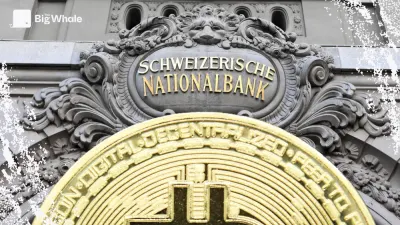TBW - Why blobs will become the cornerstone of the Ethereum economy

Introduced during the Dencun update in March 2024, blobs represent a major innovation in Ethereum's architecture. These temporary storage spaces represent a sophisticated technical solution to the blockchain's scalability challenges.
The revolutionary aspect of blobs lies in their pricing mechanism, which is separate from the main network. This separation makes it possible to offer particularly competitive data availability, competing directly with alternative solutions such as Celestia, while retaining the level of security for which Ethereum is renowned.
This strategic direction, although controversial within the crypto community, deserves in-depth analysis to understand the issues at stake and the prospects it opens up for the future of Ethereum.
Are blobs really profitable?
Analysis of the post-Dencun data reveals a significant economic impact: transaction costs on layers 2 have seen a dramatic reduction, falling by a factor of 100, thanks to the introduction of a storage space that is significantly cheaper than the old Calldata system.
This technical innovation, while beneficial for the layers 2 ecosystem, which can now offer more competitive rates, has had a notable impact on Ethereum's revenues. The figures speak for themselves: monthly revenues from rents paid by layers 2 have fallen drastically, from approximately ETH 7,000 to just ETH 500.
But analysis of the data reveals a worrying situation: the combination of historically low rents and reduced summer activity has compromised Ethereum's deflationary nature. This unexpected dynamic raises significant questions within the community about the economic viability of the model.
.png)
The "Loss leader"
The introduction of blobs with Dencun reveals a sophisticated Ethereum business strategy, akin to the "Loss leader" concept. This approach, also known as "produit d'appel" in the French-speaking world, involves deliberately offering a service below its production cost. The aim is to stimulate mass adoption and build a sustainable ecosystem over the long term.
This strategy finds a particularly relevant illustration in the case of Solana. Despite validators operating at a loss and requiring financial support from the foundation, blockchain maintains minimal transaction costs. This approach, although costly in the short term, aims to establish a user base that is large enough to ensure the future viability of the network.
Analysis of the initial results of Ethereum's strategy reveals promising indicators: the drastic reduction in transaction costs on layers 2 has catalysed significant growth in adoption. This virtuous dynamic has manifested itself not only in the influx of new users, but also in the emergence of a large quantity of L2s within the ecosystem.
The empirical data - whether in terms of usage metrics, total locked value (TVL) or the development pipeline for layers 2 - converges towards a preliminary validation of this strategic approach. Ethereum's attractiveness has strengthened considerably, thanks in particular to its clear roadmap for optimising transactional costs.
This privileged position enables the ecosystem to capitalise on two major competitive advantages: on the one hand, the level of security that is unrivalled among smart contract blockchains, and on the other, the substantial network externalities that have historically cemented its leading position in the industry.
.png)
Ethereum profitable again?
Recent data shows a clear trend: the continuous arrival of new layer 2s and the increase in their activity is gradually saturating the capacity of the available blobs. Ethereum's architecture limits effective use to 3 of the 6 existing blobs, with a pricing system that increases exponentially beyond this limit. This approach has two objectives: to encourage innovation in data optimisation and to protect the integrity of the network.
Market observations indicate that layer 2s are now approaching this critical threshold, leading to a significant increase in transaction costs. This dynamic has an unexpectedly positive effect on Ethereum's profitability, thanks to the increase in revenue generated by rents, which are systematically burned by the protocol.
However, the Q1 2025 horizon heralds a new paradigm shift with the Pectra update. This technical evolution provides for an extension to 9 blobs, 6 of which can be used efficiently, promising a new phase of cost reduction for layers 2.
This oscillation between phases of profitability and cost optimisation is part of a long-term strategy. Ethereum's roadmap, which envisages a gradual expansion to 128 blobs, illustrates a balanced approach between ecosystem growth and network economic viability.
.png)
When will it be profitable?
The Ethereum community has provided a platform to see how exponential this strategy is (see below). If we have 128 blobs with a limit of 64, and the ecosystem contains 50 layer 2s with 20 transactions per second on average, Ethereum would already be deflationary, and therefore profitable, without even counting layer 1 activity.
These figures are of course very pessimistic, the Ethereum ecosystem already has more than 50 layer 2s, and some like Base or Starknet, frequently exceed 100 transactions per second.
We don't have a precise date for this vision as it will depend on demand for layers 2, but as long as activity grows and blob space becomes increasingly scarce, Ethereum is slowly moving towards this goal.
Just as block space is a scarce resource that each layer 1 can sell to its users, blob space could become a scarce resource sold only to Ethereum, to a whole ecosystem of layer 2s, who themselves sell it back to their users.
These strategies, which are comparable to "franchising", are never really profitable at first, since instead of creating your own shop, you sell your brand and tools to someone, who has to keep using them to attract customers. It's the proliferation of these new external businesses that should ultimately lead to profitability, without ever affecting the main business, which is only responsible for selling the resources used.
.png)
Conclusion
Faced with the technical constraints limiting Ethereum's evolution, the developers have adopted an innovative strategic approach. Rather than compromise the decentralisation of the main network, they opted for an architecture based on rollups, transforming Ethereum into a robust and flexible security infrastructure.
Analysis of this strategy reveals a major competitive advantage: the rollups, benefiting from more agile governance, have become veritable innovation laboratories. This flexibility allows them to experiment with different virtual machines and technical architectures, creating a dynamic ecosystem that is impossible to replicate in the more rigid Ethereum environment.
The economic benefits of this symbiosis are significant. The mechanism for burning blob fees, combined with the growing adoption of the ETH token, is strengthening Ethereum's position in the market. While the initial sacrifice of revenue may have seemed risky, the long-term outlook suggests a substantial return on investment, particularly via strong deflationary pressure.
The emergence of interoperability solutions such as the Superchain and Agglayer marks a crucial next step. These innovations promise to solve the challenge of fragmentation, enabling a unified user experience across the different chains of the ecosystem.
However, analysts remain cautious. While the vision of Ethereum as the secure foundation of a diverse blockchain ecosystem is promising, its realisation still requires significant technical and organisational hurdles to be overcome.



